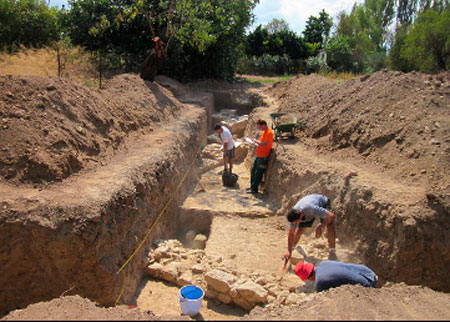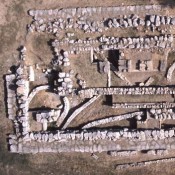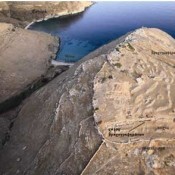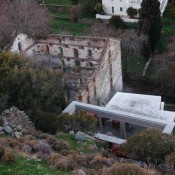The Swiss School of Archaeology is in search of the temple of Artemis Amarynhtia in Euboea, a famous open-air sanctuary of Antiquity and the end point of the procession of the Eretreans who participated at the Amarynhtia, the annual festival in honor of Artemis. And it seems that the archaeologists are very close in finding it.
This can be concluded by the exploratory trenches opened in 2012 in Amarynhtos. Director of the Swiss School of Archaeology at Athens, Karl Reber, will refer to the results of last year’s excavations, on Thursday, March 5th, at 7.00 p.m. During the annual meeting, which will be held at the Byzantine and Christian Museum, Mr. Reber will present the School’s fieldwork in 2012.
At Amarynthos, one of the most significant archaeological sites of Euboea, Swiss archaeologists have located in 2007 parts of a massive wall dating back to the Classical Era, which probably belongs to the Stoa (portico) which was built within the immediate surroundings of the temple. In 2012, the surveys continued, and the Swiss team brought to light a bigger part of the building. So far, a part of 20 m length has been revealed.
Artemision of Amarynthos was very important to the inhabitants of the area. There, the Eretrians kept the stone stelae which contained their treaties – e.g., the agreement between Eretria and Chalkis about the Lelantine Plain. It should be noted that in the magnificent procession for the Amarynthia (mentioned by Strabo, 63 BC-24 AD), 3,000 hoplites, 600 horsemen and 60 chariots participated. Later, the festival was transferred to Attica, in the Athmon Deme, and was named Amarysia, giving its name to the new festival location (today’s Marousi).
During the annual meeting, Mr. Reber will also refer to the excavation results at the Roman baths of Eretria, which date back to the middle of the 2nd century AD, and are located very close to the famous House with the Mosaics. The surveys of 2012 have focused on the investigation of the baths’ ground plan, the examination of the various phases of the monument, and the changes the rooms underwent while the baths were in use. In 2013, the surveys will focus on the examination of these results.
The annual meeting will close with a lecture given by Professor of Classical Archaeology at the Geneva University Lorenz Baumer, who will present the results of the first excavations and the new research perspectives opened up at the site of the ancient city of Kroton, in the Calabria region. In 2010, the University of Geneva started in direct cooperation with the Ufficio Territoriale di Crotone e della Sila of the Soprintendenza per i Beni Archeologici della Calabria and its director Dr. Domenico Marino a new research initiative, aiming at a better comprehension of the city of Kroton and its territory.
Mr. Reber’s lecture will be in French, and Mr. Baumer’ lecture will be in English.





